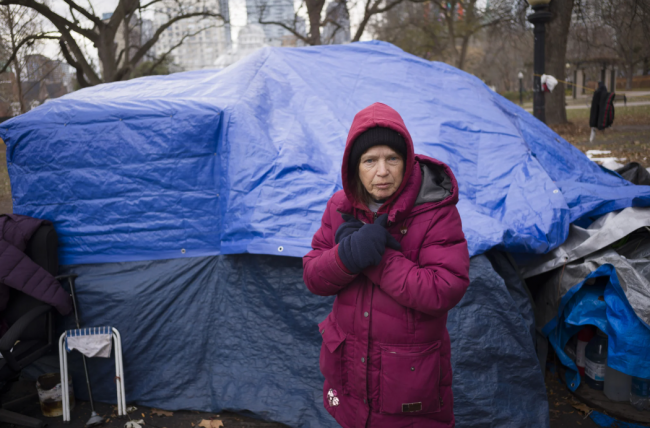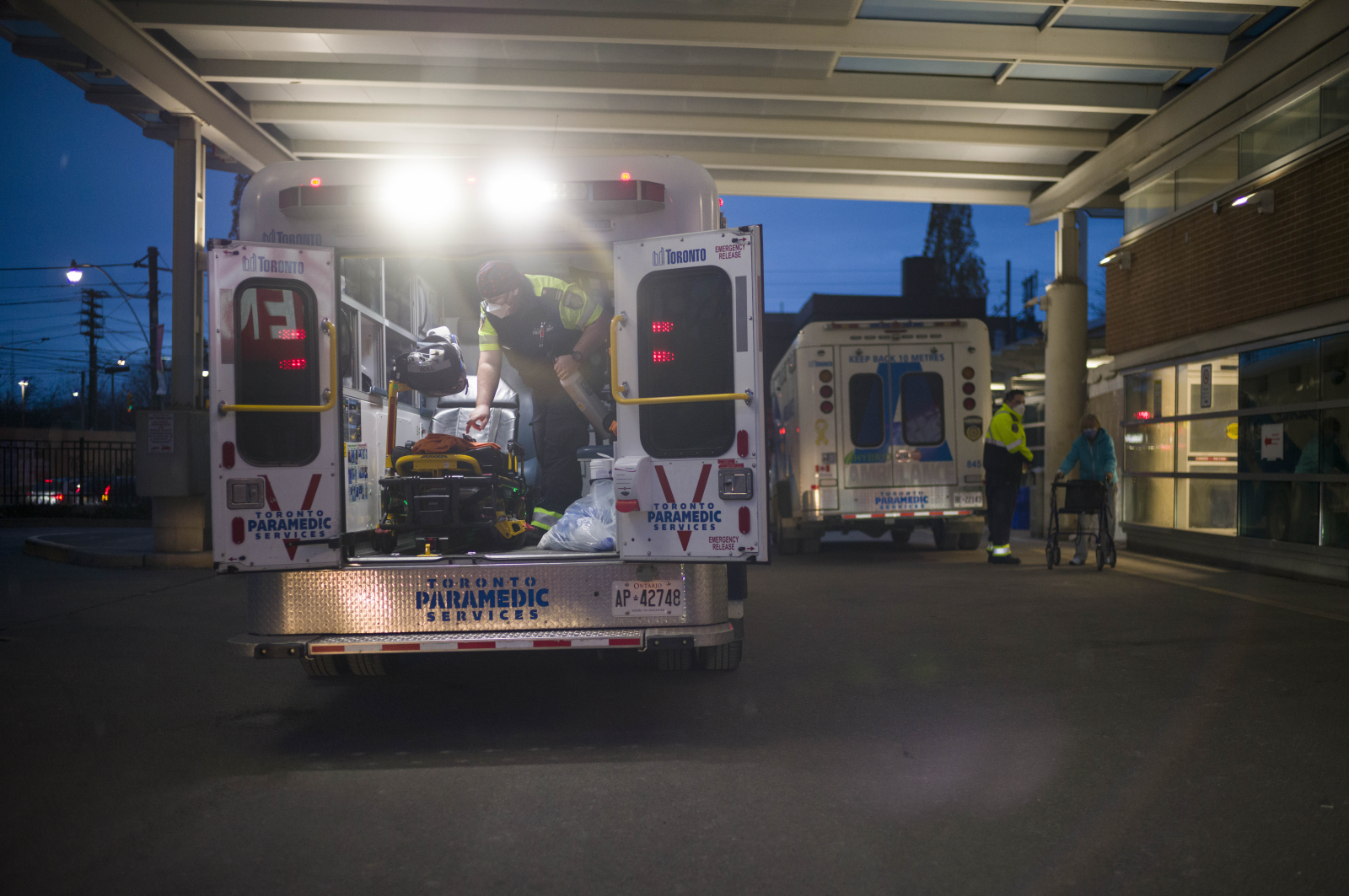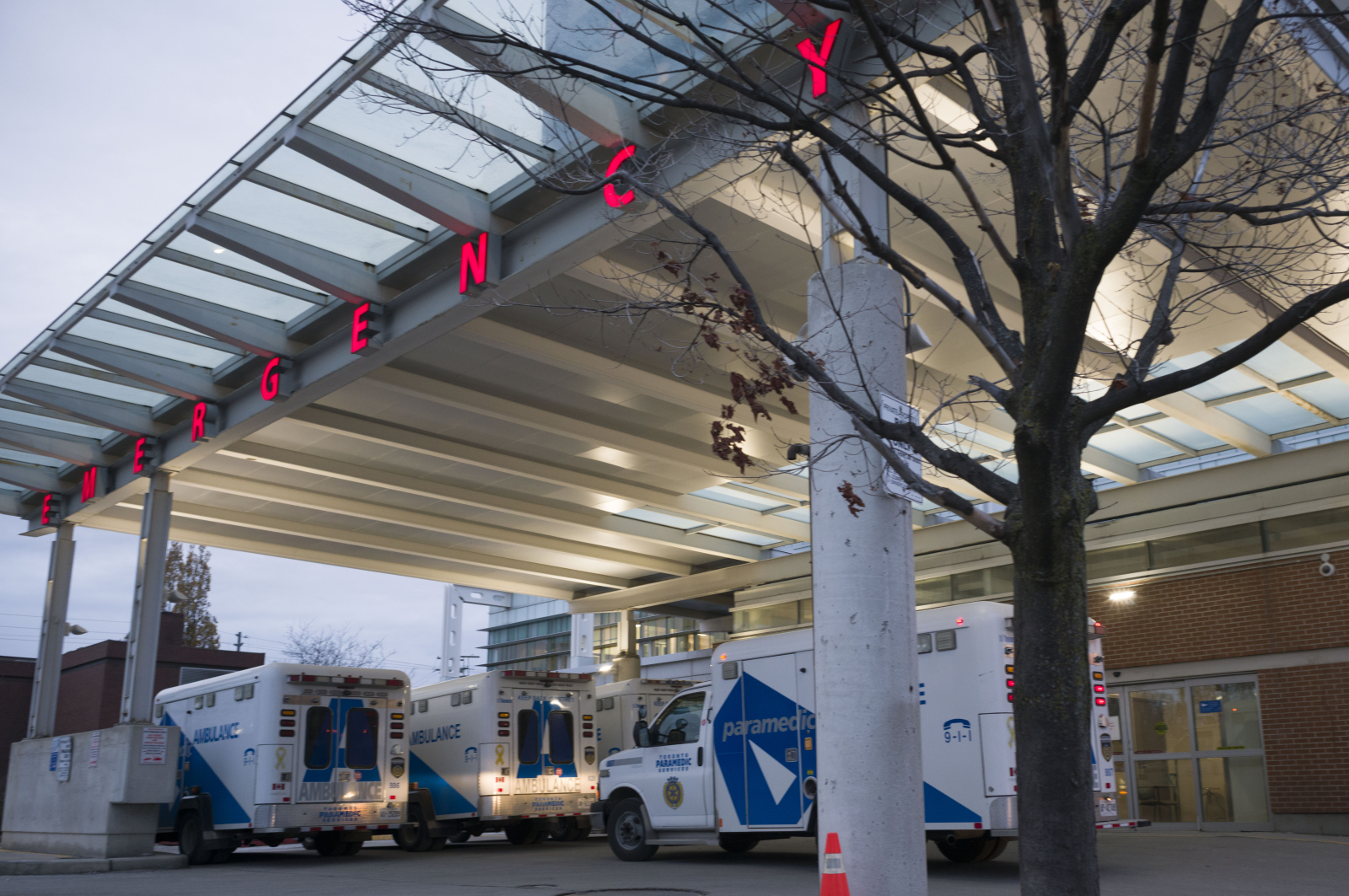Articles Menu

Dec. 12, 2022
When unhoused people in Toronto run out of options, they turn to the city’s overcrowded emergency departments for shelter.
The result is a collision of two crises, emergency department overcrowding and homelessness, that will risk lives, physicians, social workers and advocates for unhoused people say.
“We are going to see higher rates of people dying and more severe health impacts. For example, people are going to experience frostbite and people are going to have more amputations,” said Jesse Jenkinson, a postdoctoral fellow at the MAP Centre for Urban Health Solutions at St. Michael’s Hospital’s Li Ka Shing Institute.

Emergency department overcrowding is at a critical level, according to experts. A wave of respiratory illnesses, including COVID-19, has swamped ERs already struggling with hospital bed-block and nursing shortages. At the same time, the city is closing temporary hotel shelters opened during the first year of the COVID-19 pandemic to aid social distancing.
Some of the hotel occupants are being placed in permanent housing. But others are left to join the shelter bed queue and when those are full, some turn to emergency departments to stay warm. The triad of too little affordable housing and too few temporary shelter spaces and social services further adds to the strain.
Sylvia Gomes, an emergency department social worker at the University Health Network’s Toronto Western Hospital, along with her colleagues have been sounding the alarm since August.
People without homes come to the ER for shelter and warmth, but when social workers try to help them, there are no shelter beds available, she said.
People experiencing #homelessness are flooding #Toronto's overcrowded emergency departments after being turned away from shelters with no beds to spare. #Onpoli #topoli #HousingCrisis - Twitter
We are having tremendous difficulty in the emergency department supporting unhoused people and in ensuring that they leave to a place where they are warm and safe,” said Dr. Aaron Orkin, an emergency physician at St. Joseph’s Hospital and the population health director for Inner City Health Associates.
Shelter beds are allocated through a 24/7 city-operated telephone-based service that refers people to dormitory-style congregate shelters and other overnight accommodations. Congregate shelters sleep up to 20 people per room.
City data shows the number of calls to central intake continues to climb. In January, there were 411 calls to central intake; the numbers mounted to 749 in October.
The data also shows that in October, an average of 186 unhoused people per day went unmatched. This is almost eight times the rate in October 2021 rates. Gomes believes that’s a conservative estimate. Many people don’t call because they can’t tolerate the conditions in congregate shelters or have given up because they know they won’t find a spot.

Between January and October, 3,418 people were moved out of the shelter system to permanent housing, according to an email from the City of Toronto’s Shelter, Support and Housing Administration (SSHA).
Despite that, there is a rising demand for shelter beds, said Milton Barrera, project director of homelessness initiatives and prevention services at SSHA. “People are getting evicted from their rentals,” he said. “There are also more refugees.”
According to a November briefing by Gordon Tanner, SSHA general manager, 27 per cent of those currently in shelters are refugees, with 60 to 90 new people accessing the shelter system each week.
Meanwhile, the city is continuing to relocate people from the temporary hotel shelter beds that housed 2,500 people, sleeping one or two per room. Two sites with about 225 residents closed in the spring, another site with 250 beds will shutter by the end of this month and one is being converted to permanent affordable and supportive homes.
The SSHA’s stated goal is to find permanent housing for all former hotel residents, but Barrera admits there is not enough to go around.

According to city data, at one site alone, 251 people are losing their temporary hotel rooms and it is projected only 48 will find permanent housing. The remaining 203 will be out on the street and forced to seek shelter elsewhere.
Not all of the hotel bed closures are within the city’s control, according to Dr. Stephen Hwang, an internal medicine physician at St. Michael’s Hospital and the director of the MAP Centre for Urban Health Solutions. “Many owners are not willing to renew their leases,” he said. Most signed leases with the city during the pandemic when hotel occupancy was low and are now resuming their pre-pandemic businesses.
Orkin says the hotel closures are contributing to the current situation. He has also noticed longer lines for shelters and food banks. “That will push hardest on those who are marginalized, leaving them out of doors with only alternate places to stay warm — whether that is a parking lot stairwell or the emergency department.”
Barrera said the city is taking action: 250 shelter spaces recently opened and there are plans for more.
SSHA is also increasing capacity at existing congregate shelters by squeezing more beds into each site. Going forward, the distance between beds in the dormitories will shrink from two metres to 1.25 metres. This will free up 500 additional spaces, according to Barrera.
Hwang said those efforts will not be enough to meet demand. “The math doesn’t completely add up,” said Hwang.
Jenkinson said cuts to social services are exacerbating the situation.
Drop-in centres, used by the homeless for shelter and warmth, are losing funding and have to cut back on services, Jenkinson said. “Going to drop-in centres is suboptimal, but even that option is being drastically reduced.”
Gomes said emergency departments have become the “new 129 Peter Street,” referring to a 24/7 homeless drop-in centre that is full and not taking clients. She sees homeless people sleeping in the ER lobby on a daily basis.

Hwang is seeing more younger people and 70- to 80-year-olds experiencing homelessness for the first time in his practice. He points to evictions and high rental prices as possible culprits.
“It’s a striking trend,” he said.
“People who have jobs can’t afford housing. People making 60 to 70K a year are sleeping in their cars. It’s wild,” Jenkinson said.
Being homeless leads to increased injuries and diseases, Hwang said. Older people have higher health-care needs, which are exacerbated if they are unhoused.
People staying in congregate shelters have a greater risk of catching airborne and infectious diseases. And with beds now being pushed even closer together, more people will get sick, Hwang said.
Barrera said his team is following public health guidelines by decreasing bed spacing from two metres to 1.25 meres. Pre-pandemic, the distance permitted between beds was even tighter, at 0.75 metres.
Long before COVID-19 struck, experts were already pushing for non-dormitory shelter spaces to reduce disease transmission, said Orkin.
The pandemic has been especially hard on unhoused people. In 2021, according to city data, 221 homeless people died. Pre-pandemic, the numbers ranged from 90 to 100. Experts believe the numbers are even higher because not all deaths are reported to Toronto Public Health.
“Clearly, we’ve neglected providing adequate funding for affordable housing for decades and now we are behind the 8-ball,” said Hwang.
“I get around the city on a bike in all four seasons. The number of times that I have stopped on my bike going to and from shifts to check if people are alive over the last five years is just far, far too high. I am equally as worried when there is a heat wave in the summertime,” said Orkin.
Orkin said it will require bold solutions from decision-makers to improve the situation for homeless people. As it stands, homeless people bear all the risk, he noted. “They are the ones dying.”
According to Tanner’s November winter plan briefing, Torontonians should embrace new supportive and affordable housing projects in their communities.
And Jenkinson said government cuts to social services must stop. “We need deeply affordable housing. Currently, affordable housing, defined at 80 per cent of market value, is not affordable for most people. We need this to be a priority for all levels of government. We need the political will. Until that happens, we are going to continue to struggle.”
Gomes experiences that struggle daily. With record-high numbers of unhoused people and overtaxed emergency departments and hospitals, hospital staff have to release those seeking shelter and warmth back onto the street.
“It is completely out of their power and control,” Jenkinson said. “This winter is terrifying.”
[Top photo: Lynn Walker, 63, cleans up around her home in a homeless encampment in Allan Gardens park in Toronto on Dec. 1, 2022. Photo by Ian Willms for Canada's National Observer]